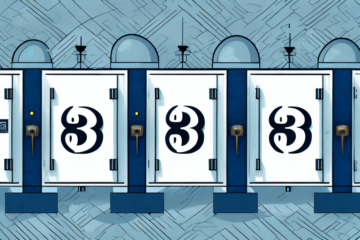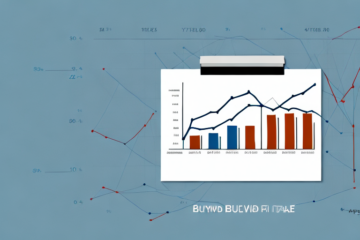What Is the 0x Protocol and How Does It Impact Finance?
Blockchain technology has transformed the way we view finance. As more people become familiar with the technology, decentralized finance (DeFi) is rising in popularity. In recent times, DeFi has become the hot topic, and 0x protocol is one of the newest buzzwords in this space.
The Basics of Decentralized Finance (DeFi) and Why It Matters
Decentralized finance refers to an open financial ecosystem, which operates without intermediaries such as banks, insurance, or credit institutions. It is based on blockchain technology that allows different parties to transact without the need for intermediaries. It heralds a new era of trustless transactions and personal control over assets, without government or corporate intervention. It is completely open and transparent and offers financial services to any person regardless of their location. The emergence of DeFi is disrupting the traditional financial system, breaking down the barriers to entry and making it more accessible to everyone. This is where 0x protocol comes into play.
0x protocol is a decentralized exchange protocol that enables the peer-to-peer exchange of tokens on the Ethereum blockchain. It allows for the creation of decentralized exchanges, where users can trade tokens without the need for a centralized intermediary. This means that users have full control over their assets and can trade with anyone in the world, without the need for a middleman. 0x protocol is open-source and allows developers to build on top of it, creating new decentralized applications and financial products. It is a key player in the DeFi ecosystem, enabling the growth and development of decentralized finance.
Exploring the History of Cryptocurrencies and Blockchain Technology
The blockchain technology originated from Bitcoin, the first cryptocurrency, created in 2009 by Satoshi Nakamoto. It is a distributed ledger that records every transaction in the network, providing a transparent and secure system for the creation, tracking, and transfer of assets. With time, new cryptocurrencies emerged, including Ethereum, which was created in 2015 by Vitalik Buterin. Ethereum introduced the concept of programmable smart contracts, enabling the creation of decentralized applications (dapps) on its blockchain.
Another notable cryptocurrency that emerged after Bitcoin is Ripple, which was created in 2012 by Chris Larsen and Jed McCaleb. Ripple is unique in that it is not based on blockchain technology, but rather uses a consensus algorithm to validate transactions. It is designed to facilitate fast and low-cost international money transfers.In recent years, blockchain technology has been adopted by various industries beyond cryptocurrencies. For example, it is being used in supply chain management to track the movement of goods and ensure their authenticity. It is also being explored as a means of secure voting and identity verification. As the technology continues to evolve, it is likely that we will see even more innovative applications in the future.
Understanding Tokenization and Its Role in the 0x Protocol
Tokenization refers to the process of creating digital versions of real-world assets such as property, stocks, bonds, and commodities. Tokenization allows for the creation of asset-backed digital tokens that can be traded on a blockchain. These digital assets are secure, transparent, and immutable due to the decentralized nature of blockchain technology. The 0x protocol is built on the Ethereum blockchain, and it facilitates the trading of these digital assets.
In addition, tokenization has the potential to increase liquidity in traditionally illiquid markets. By creating digital tokens that represent ownership of assets, investors can easily buy and sell these tokens on a blockchain-based exchange, without the need for intermediaries such as brokers or banks. This can lead to more efficient markets and greater access to investment opportunities for a wider range of investors.
How the 0x Protocol Enables Trustless Trading on the Ethereum Network
The 0x protocol enables trustless peer-to-peer trading on the Ethereum network. It allows individuals to trade assets securely and privately without needing to trust a centralized intermediary. The protocol makes it possible to exchange different digital assets, including cryptocurrencies, fiat currencies, tokens, and more. The system is highly secure, and each transaction is verified by multiple parties before being executed, eliminating the risk of fraud.
One of the key benefits of the 0x protocol is its ability to reduce transaction costs. By eliminating the need for intermediaries, users can save on fees that would otherwise be charged by centralized exchanges. This makes it easier for individuals to participate in trading activities, regardless of their financial resources.
Another advantage of the 0x protocol is its flexibility. The system is designed to be highly customizable, allowing developers to create their own decentralized applications (dApps) on top of the protocol. This means that users can access a wide range of trading tools and services, all built on a secure and reliable infrastructure.
The Benefits of Decentralized Trading for Investors and Traders
Decentralized trading offers several benefits to investors and traders, compared to traditional trading methods. The elimination of intermediaries saves time, reduces transaction costs, and offers better transparency. The system also provides more opportunities for liquidity as it offers a global platform for trading. Moreover, decentralized trading is not subject to border restrictions or regulations, making it easier for individuals to trade assets regardless of their location.
In addition, decentralized trading also offers increased security and privacy for traders. Since the transactions are recorded on a blockchain, they are immutable and cannot be altered or tampered with. This ensures that the trading process is secure and transparent. Furthermore, traders can maintain their anonymity while trading, which protects their personal information and reduces the risk of identity theft. Overall, decentralized trading provides a more efficient, secure, and accessible way for investors and traders to participate in the global market.
How 0x Improves Liquidity in Crypto Markets
The 0x protocol provides a liquidity pool for traders, allowing them to transact in various digital assets. This creates a dynamic and robust market for cryptocurrencies and other digital assets. It also enhances the trading volume in cryptocurrencies, subsequently increasing their value. The protocol also minimizes price slippage and reduces the bid-ask spread, making the market for digital assets more stable.
In addition to these benefits, the 0x protocol also enables decentralized exchanges to be built on top of it. This means that traders can transact directly with each other, without the need for a centralized intermediary. This not only reduces the risk of hacking and theft, but also allows for greater privacy and control over one’s own assets.Furthermore, the 0x protocol is highly customizable, allowing developers to create their own unique trading features and interfaces. This fosters innovation and competition within the market, ultimately benefiting traders and investors. Overall, the 0x protocol plays a crucial role in improving liquidity and stability in the rapidly growing world of cryptocurrency and digital assets.
Examining the Role of Relayers in the 0x Ecosystem
Relayers play a significant role in the 0x ecosystem. They are decentralized trading platforms that allow for the exchange of assets between buyers and sellers. They facilitate the trading of digital assets and link buyers and sellers in a trustless manner. Relayers enable users to make trades without worrying about the security of their funds, as the protocol ensures a high level of security and assurance.
In addition to providing a secure trading environment, relayers also offer a number of other benefits to users. For example, they often have lower fees than centralized exchanges, as they do not have to maintain expensive infrastructure or pay for regulatory compliance. This makes them an attractive option for traders who are looking to save on costs.Furthermore, relayers are often more accessible than centralized exchanges, as they do not require users to go through a lengthy and complicated registration process. This means that anyone with an internet connection can use a relayer to trade digital assets, regardless of their location or financial status. As a result, relayers are helping to democratize access to financial markets and promote greater financial inclusion around the world.
The Future of Finance: How 0x Is Revolutionizing Traditional Markets
The rise of decentralized finance and blockchain technology is changing the financial landscape. The 0x protocol is at the forefront of this revolution. It enables the creation of a new financial infrastructure, which has the potential to replace traditional financial systems. The ability to trade assets in a trustless and transparent manner offers unprecedented opportunities for individuals to access financial services. This technology has the potential to increase financial inclusion and promote economic empowerment.
Moreover, the 0x protocol is also addressing the issue of liquidity in decentralized exchanges. By allowing for the creation of liquidity pools, it ensures that there is always a market for any asset that is being traded. This is a significant improvement over traditional markets, where liquidity can be limited, and assets can be difficult to trade. With the 0x protocol, anyone can create a liquidity pool, and anyone can trade on it, making it a truly decentralized and accessible financial system.
Potential Risks and Challenges with Using the 0x Protocol for Trading
Like all new technologies, there are potential risks and challenges with using the 0x protocol. One of the primary concerns is security. Due to the complex nature of the system, there is always a risk of malicious actors exploiting vulnerabilities. Moreover, the lack of regulations makes it hard to ensure that the system operates fairly and transparently. Additionally, the volatility of digital assets can cause significant losses for traders, making it essential to understand the risks involved before using the system.
Another challenge with using the 0x protocol is the potential for liquidity issues. Since the protocol relies on a network of decentralized exchanges, there may be times when there are not enough buyers or sellers to execute a trade. This can result in delays or even failed transactions, which can be frustrating for traders. Additionally, the lack of a central authority means that there is no one to turn to for support or dispute resolution in the event of a problem.
Finally, there is the issue of adoption. While the 0x protocol has gained popularity in the cryptocurrency community, it is still relatively unknown to the general public. This lack of awareness can make it difficult for traders to find counterparties to trade with, which can limit the usefulness of the system. Moreover, the complexity of the protocol may deter some users from using it, as it requires a certain level of technical knowledge to operate effectively.
Comparing 0x to Other Decentralized Exchange Protocols on the Market
There are several decentralized exchange (DEX) protocols on the market, each offering different features and functionalities. Some of the other notable DEX protocols include Kyber Network, Bancor, and Uniswap. However, 0x distinguishes itself by providing a higher level of security, better liquidity, and more robust trading volumes. Moreover, it offers users more flexibility in terms of the assets they can trade.
In addition, 0x has a unique architecture that allows it to be integrated into other decentralized applications (dApps) seamlessly. This means that developers can easily incorporate 0x into their own dApps, providing their users with access to a decentralized exchange without having to build one from scratch. This feature has made 0x a popular choice among developers and has contributed to its growing adoption in the decentralized finance (DeFi) space.
Real-World Applications of the 0x Protocol in Today’s Financial Landscape
Many use cases demonstrate the real-world applications of the 0x protocol. The system has been employed to create decentralized applications that facilitate trading and lending in digital assets. For instance, the Augur prediction market platform has integrated the 0x protocol, allowing individuals to trade predictive assets. DDEX and Radar Relay are other examples of relayers built on the 0x protocol, enabling users to trade cryptocurrencies and other digital assets.
Moreover, the 0x protocol has also been utilized in the creation of stablecoins, which are digital currencies that are pegged to a stable asset, such as the US dollar. The protocol enables the seamless exchange of stablecoins, making it easier for individuals and businesses to transact with these currencies. Additionally, the 0x protocol has been used to create decentralized exchanges, which allow for peer-to-peer trading without the need for intermediaries. These exchanges offer increased security and transparency, as well as lower fees compared to traditional centralized exchanges. Overall, the 0x protocol has a wide range of real-world applications that are transforming the financial landscape.
The Role of Governance Tokens in Decentralized Finance: A Case Study on ZRX
Governance tokens like ZRX are essential to the proper functioning of decentralized financial networks. They provide holders with unique technological functionalities and the ability to vote on network upgrades and protocol changes. The 0x protocol’s native token, ZRX, serves as the governance token for the network. It allows users to participate in the voting process, which gives them a say in the decision-making process that affects the protocol’s direction.
In addition to its governance functionalities, ZRX also serves as a utility token within the 0x ecosystem. It is used to pay for transaction fees and incentivize market makers to provide liquidity to the network. This dual functionality of ZRX as both a governance and utility token makes it a crucial component of the 0x protocol and highlights the importance of governance tokens in decentralized finance. Without governance tokens, decentralized networks would lack the necessary mechanisms for decision-making and incentivization, ultimately hindering their ability to operate effectively.
Key Players and Partnerships within the 0x Ecosystem
The 0x ecosystem consists of several key companies, including DDEX, Radar Relay, and Paradex. These companies are essential to the proper functioning of the ecosystem, as they allow for the exchange of digital assets. Additionally, the protocol has benefited from partnerships with notable entities such as Augur, MakerDAO, and Chainlink. These partnerships help increase the adoption of the technology and provide new use cases for the 0x protocol.
Furthermore, the 0x ecosystem has seen the emergence of new players in recent years, such as OpenRelay and Bamboo Relay. These companies have brought new innovations to the ecosystem, such as the integration of decentralized finance (DeFi) protocols and the use of non-fungible tokens (NFTs) in trading.Moreover, the 0x protocol has also gained support from prominent investors, including Polychain Capital, Blockchain Capital, and Pantera Capital. These investors have provided funding and resources to help the ecosystem grow and expand its reach. With the support of these key players and partnerships, the 0x ecosystem is poised to continue its growth and development in the coming years.
A Step-by-Step Guide to Using the 0x Protocol for Trading Cryptocurrencies
Using the 0x protocol for trading cryptocurrencies involves a simple, straightforward process. First, one needs to set up an Ethereum address, which allows them to hold Ethereum and other digital assets. After that, they need to acquire ETH by buying it on a cryptocurrency exchange. Once they have ETH, they need to send it to a decentralized exchange or relayer built on the 0x protocol. From there, they can trade the ETH for the asset they desire. Finally, they can withdraw their asset by transferring it to their Ethereum wallet.
In conclusion, the 0x protocol is a game-changing technology that is revolutionizing the financial landscape. Its ability to facilitate trustless trading and exchange of digital assets is essential in today’s decentralized finance landscape. The protocol offers numerous benefits, including increased liquidity, transparency, and security. However, as with any new technology, it poses risks, and individuals must understand the potential challenges. Nevertheless, the 0x protocol is at the forefront of a new era in finance and is set to shape the future of trading and financial markets.
One of the significant advantages of using the 0x protocol is its ability to reduce transaction costs. Traditional financial systems charge high fees for transactions, which can be a significant barrier to entry for many individuals. However, the 0x protocol eliminates the need for intermediaries, reducing transaction costs significantly. This makes it easier for individuals to participate in the financial markets and trade digital assets.
Another benefit of the 0x protocol is its ability to increase market efficiency. The protocol allows for the creation of decentralized exchanges, which operate 24/7 and are accessible to anyone with an internet connection. This means that individuals can trade assets at any time, increasing market efficiency and reducing the time it takes to execute trades. Additionally, the protocol’s open-source nature allows developers to build on top of it, creating new applications and tools that further increase market efficiency.










